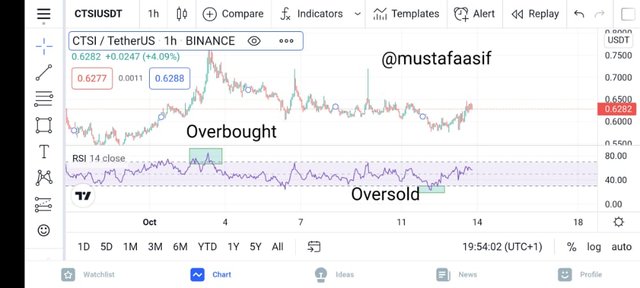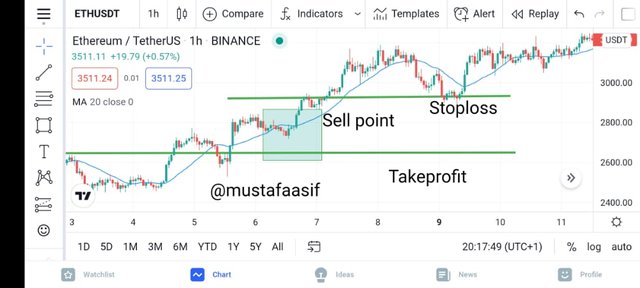In-depth Study of Market Maker Concept - Steemit Crypto Academy | S4W6 | Homework Post for @reddileep
Hello wonderful people, how are you today? I hope you're having a fantastic week. I'm grateful to be a part of this wonderful lecture. In this article, I'll share my experience with In-depth Study of Market Maker Concepts.

1- Define the concept of Market Making in your own words.
The concept of market making stems from the fact that trading is buying and selling assets at a price that is advantageous to the trader. Now, it's crucial to note that in the cryptocurrency world or in reality, there are times when we want to trade based on a predetermined price in order to maximize our profit.
If a person goes to the supermarket and wants to buy any product from the market, he does not need to price those commodities because the prices are already tied to them, and he pays that price. If a person goes to an open market and wants to buy salt for $5, but when he gets to the spot where salt is sold, he is told that salt costs $5.5, he will decide to bargain and lower the price to the $5 he wants to pay.

source
The two scenarios above have explained two different types of traders: a market taker and a market maker. The market taker trade was started right away since the trader paid the current value of the asset at that point in time. The second, who happens to be the market maker, does not execute his deal right away since he has a different price than the seller.
A market taker is a trader who accepts the current market price of the trade at that moment in time and executes it immediately. The market maker, on the other hand, does not accept the present market price and instead sets his or her own market price for buying or selling. For example, if an asset X is now priced at $15 and a buyer intends to purchase it at $13.5, the buyer in this case is the market maker since he has predetermined the price at which he will be able to purchase the item. As a result, his request will only be fulfilled if the price of asset X falls to $13.5.

2- Explain the psychology behind Market Maker. (Screenshot Required)
Buying and selling, as we all know, happens all the time in the market. Most people assume that the market swings at random, with buyers and sellers trading every second. Trading takes place every second, every minute, and at all hours of the day. Regardless of how we observe trading taking place, there are still certain people in the trading sector who refuse to accept the present asset price and instead set their own price.
Market markers are a group of people that set prices that they are comfortable with. Market makers have the ability to create two types of orders (buy/sell). They may elect to create a bargain buy order and subsequently a sell order at a greater price than the buy order. The primary goal of market makers is to increase market liquidity. Now, as I previously stated, there is a gap between the buy and sell orders, and this gap is normally filled by those known as market takers.
Consider the following scenario to demonstrate how market makers generate liquidity in the economy. There is a space or a gap in between buy and sell orders if a market maker decides to create both purchase and sell orders with prices of $48 and $55, respectively. Other traders, such as market takers, are responsible for using the prices between both the buying and selling orders to make their own trades. As a result, we can see that the market maker has finally developed liquidity through the many orders that they have placed.

source
Whales are another factor that plays a significant role in Market Maker's mentality. These individuals are extremely dangerous because they may supply a wide range of liquidity and then remove it in the blink of an eye, causing traders to lose a significant amount of money. They are well-known in the market for extorting small traders. They can use their authority to push the price of an asset down and then fool traders into entering the market. Once enough traders have entered, they can abruptly boost the price, causing traders who are already in the trade to lose their assets.

3- Explain the benefits of the Market Maker Concept?
The market maker concept has various advantages, which I will discuss in simple terms here.
Provision of Liquidity: As we mentioned previously in our explanation, market makers serve to create liquidity to the market by placing two orders, a buy order and a sell order, with a little gap between them. Other traders, such as market takers, use this small lady to help them execute trades quickly.
Increase the number of participants: The concept of a market maker can attract more traders to the market by increasing the value of the coins. Traders who aren't very experienced in trading hunt for any opportunity to profit.
Efficient running of trade: Because of the liquidity they supply, market makers contribute significantly to the efficient ruining of trade in the market. There may not be adequate liquidity in the market if market makers are not involved in a trade.
No too much volatility: The market maker aids in lowering the amount of volatility in a coin. The market taker can foresee since the market participants set a specific buy and sell position and give stability within that price range, and he does not have a large range of intervals to do so.
Favors small traders: Traders with less power might benefit handsomely by taking advantage of the availability offered by market participants. When traders properly get the notion of a professional trader, they will be able to recognize when a whale is giving availability, and when a market maker is providing liquidity, he will be able to capitalize on that knowledge and earn more.

4- Explain the disadvantages of the market maker concept.
The disadvantages of the market maker concept are seen below.
"Because market makers provide liquidity, we've already established that, while larger investors may profit handsomely if the market trader's concept is well-known, smaller retailers may lose their assets if they aren't vigilant and aware of the market maker's plan.
The market maker concept does not facilitate scalping. Intraday investors that trade on a timeline of one minute to two hours use the term "scalp trading."
This is because the difference between the bid and ask prices is usually too small for daily investors to make a profit.Market makers make money by investing with market participants or small investors. Market makers can take money from small investors, especially if their ideas aren't broadly understood.
Market makers make money by investing with market participants or small investors. Market makers can take money from small investors, especially if their ideas aren't broadly understood.

5- Explain any two indicators that are used in the Market Maker Concept and explore them through charts. (Screenshot Required)
In this segment of the lesson, I'll go over two indicators that are used in the market maker concept. It's vital to remember that we don't use indicators in the market maker model. The two indicators I'll cover in this segment of the class are the relative strength index and moving averages.
- Let's begin with the
Relative strength index (RSI)

The Relative Strength Index (RSI) is a price movement and variation indicator. The RSI ranges between zero and one hundred. When the RSI exceeds 70, it is considered overbought, and when it falls below 30, it is considered oversold. Signals can be created using turbulence and failed fluctuations. A wide trend can also be seen using the RSI.
The RSI, along with other technical indicators, is used by market analysts and investors to find opportunities to enter or exit trades.
It is regarded bullish when the RSI exceeds the horizontally 30 levels, and it is considered bearish when it falls below the horizontally 70 levels.
- Now, as seen in the image below, we can view the changes from the perspective of economic makers.

Tradingview.com

Moving Average.
A moving average (MA) is a commonly used indicator in technical analysis. The goal of calculating a currency's moving average is to smooth out market data over a set period of time by maintaining a constantly refreshed average price. A simple moving average (SMA) is a calculation that determines the arithmetic mean of a set of prices over a given period of time (10, 20, 55, or 200 days). Moving averages are a type of average that is used to
- Buy and sell orders Using Moving Averages.

Traders use the moving average to look for support and resistance by analysing the price variations of a coin. The past price activity of a currency is represented by a moving average. Traders and investors then use the data to forecast the price movement of the investment. It is considered a lagging indicator since it generates a signal or indicates the direction of a particular trend by following the market movements of the actual coin or currency.
- The moving simple moving average signal, which has been altered by the market maker, now depicts fake-outs in the market-making idea. The pictures beneath demonstrate it.

Tradingview.com
Conclusion.
Market makers are those who, because they disagree with the existing market price of an item, set a price for themselves at which they are willing to purchase or sell. Liquidity providers are what we call them in the crypto realm. Market makers are well-known for assisting in the smooth and efficient execution of trades by providing the necessary liquidity.
I'd want to express my heartfelt gratitude to the professor, @reddileep, for delivering such an excellent presentation. This is quite instructive and helpful, and I eagerly anticipate learning more from you in the near future. Prof., thank you once more.
cc : @reddileep
#reddileep-s4week6 #market-maker #cryptoacademy #moving-average
